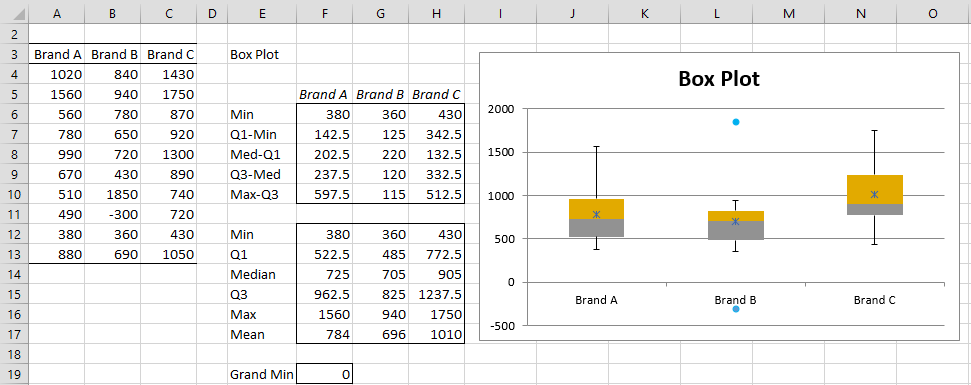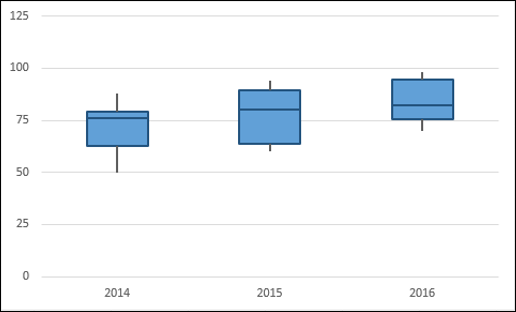

Created a stacked column chart by clicking the "Insert" tab on the Excel Ribbon, clicking "Column" and selecting "Stacked Column" from the "2-D Column" group in the Column menu. Select the "Series 1" through "Series 4" values for your first data set do not select the "Series 5" value at this time. Generate the differences between your data points by creating a second set of data labeled "Series 1" through "Series 5." Assuming that the data points for your first data set were generated in cells J1 to J5, the value for "Series 1" should be "=J1," the value for "Series 2" should be "=J2-J1," the value for "Series 3" should be "=J3-J2," the value for "Series 4" should be "=J4-J3" and the value for "Series 5" should be "=J5-J4." Repeat this in a new column for each data set. Repeat Steps 3 through 5 with any additional data sets that you have entered into your spreadsheet to generate the same five points of data for each data set. Type "=PERCENTILE(A$1:A$15,0.25)" without the quotes in the empty cell next to "25th Percentile," adjusting the cell range referenced by the command to fit the way your data is organized.Įnter "=MEDIAN(A$1:A$15)" next to your "Median" entry, "=PERCENTILE(A$1:A$15,0.75)" next to your "75th Percentile" entry and "=MAX(A$1:A$15)" next to your "Maximum" entry to finalize your calculations, again adjusting the cell range as needed. This assumes that the data grouping you wish to find a minimum for begins with cell A1 and ends with cell A15 change the cell coordinates as needed to represent the way that your data is organized as you enter the cell data.

Select the cell next to "Minimum" and type "=MIN(A$1:A$15)" without the quotation marks.

Ideally these entries should be placed in a single column so that the data generated for each entry will be grouped together in a single portion of the spreadsheet. Enter "Minimum," "25th Percentile," "Median," "75th Percentile" and "Maximum" into unoccupied cells in your spreadsheet.


 0 kommentar(er)
0 kommentar(er)
